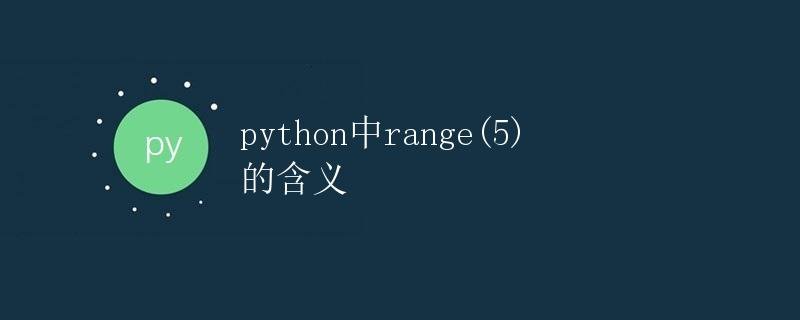Meaning of range(5) in Python
The meaning of range(5) in Python

In Python, range(5) is a common function call used to generate a sequence of integers starting from 0 and ending at 5 (not including 5).
Syntax
range() The syntax of the function is as follows:
range(start, stop, step)
Parameter Description:
start: The starting value of the sequence, the default is 0stop: The ending value of the sequence, the generated sequence does not include this valuestep: The step length of the sequence, the default is 1
Example
Example 1:
for i in range(5):
print(i)
The output is:
0
1
2
3
4
In the above code, range(5) generates a sequence of integers from 0 to 4, loops through each value and prints it out.
Example 2:
print(list(range(5)))
The output is:
[0, 1, 2, 3, 4]
In the above code, list(range(5)) converts the integer sequence into a list and prints it out.
Notes
range()generates a lazy sequence instead of an actual list. If you need to generate a list, you can uselist()to convert it into a list.- In Python 2, the range() function returns a list, while in Python 3 it returns an iterable. If compatibility with Python 2 is required, use the xrange() function instead.
In short, range(5) in Python means generating a sequence of integers ranging from 0 to 5 (excluding 5), which can be used for looping or generating lists.